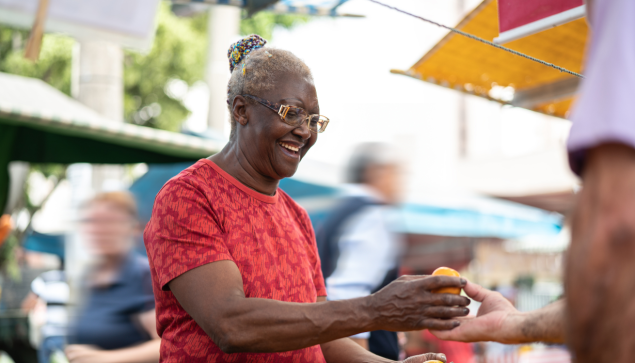When Elder Shirley Williams tells the story of the Mnoomin, she says, there is no such thing as wild rice, just as there have never been wild Indians. The word Mnoomin, was translated by settlers as “wild rice” although the word “wild” doesn’t exist in the Ojibwe language.
The legend of Mnoomin, told by Elder Shirley Williams
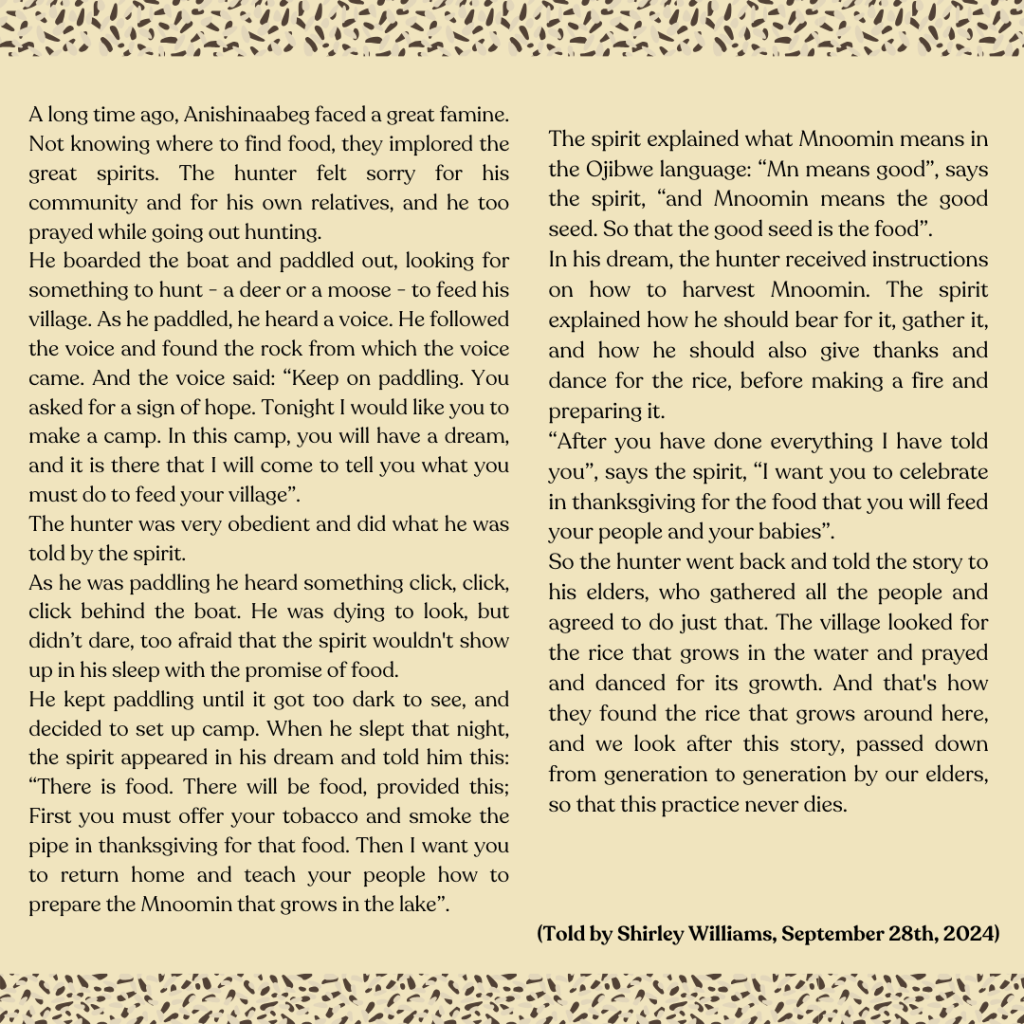
On the occasion of the 5th Mnoominkewin Gathering, September 28th, 2024, the Anishinaabe community of Curve lake First Nation in William Treaty Territory, held a ceremony to celebrate the harvesting of the Indigenous sacred seed. Food Secure Canada was honored to be invited to celebrate the Mnoomin harvest in keeping with Indigenous traditions. [Below you’ll find photos and documentation of the entire harvesting process of the Mnoomin, reported by our Communications Coordinator]
Mnoominkewin Ceremony: Planting, Gathering, Roasting, & Dancing Mnoomin
The ceremony started at sunrise, with the lighting of the sacred fire, kept burning by the fire keepers throughout the celebrations. The excitement was tangible, the sun was offering a breathtaking show, painting the sky with nuances of red, orange, and purple. The smell of smoke, the crackling of fire, the smudging of sage and pine, and the heat that was gently spreading around the dozen people gathered for the occasion, grounded us all to the beginning of the ceremony.
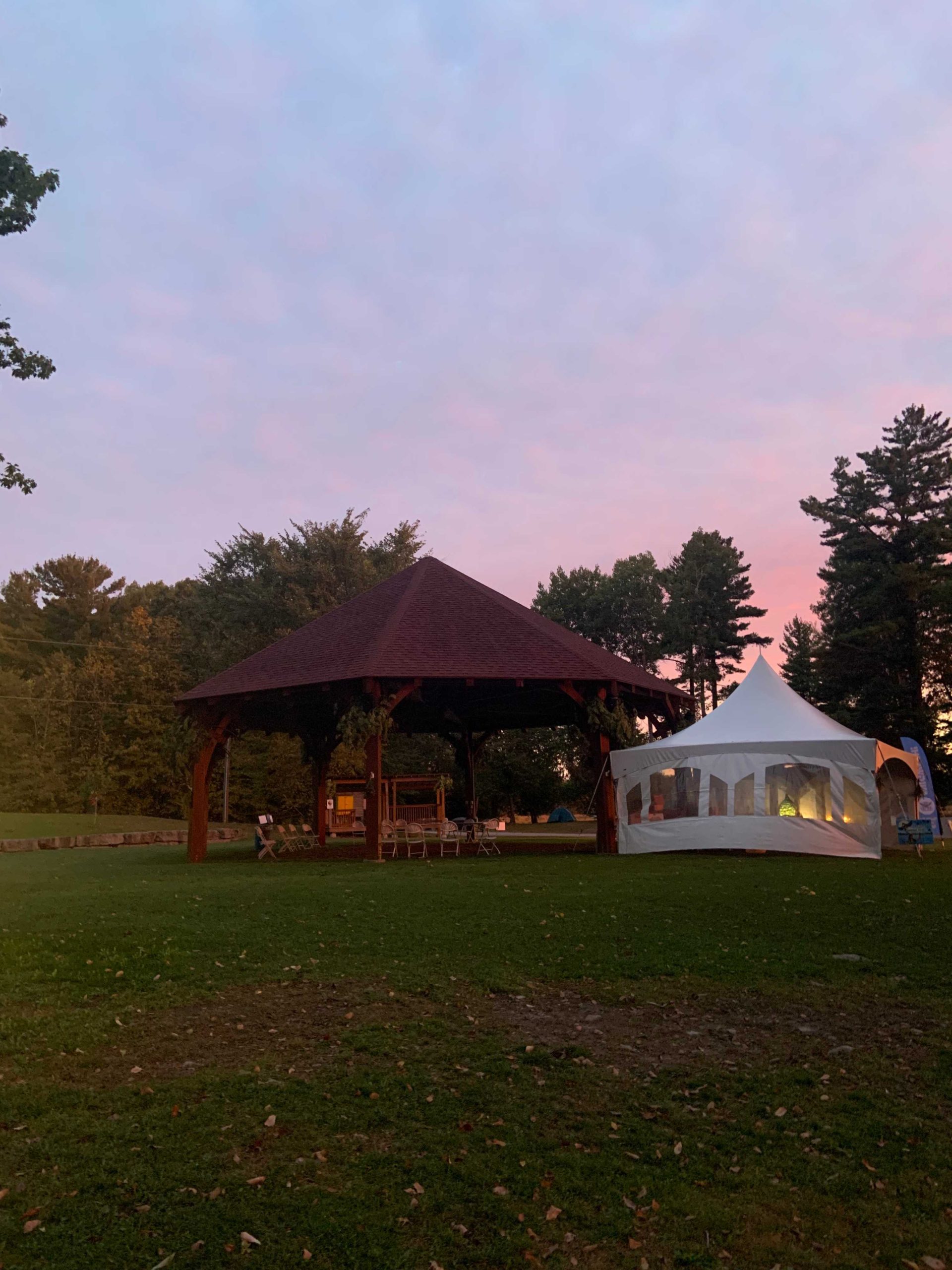
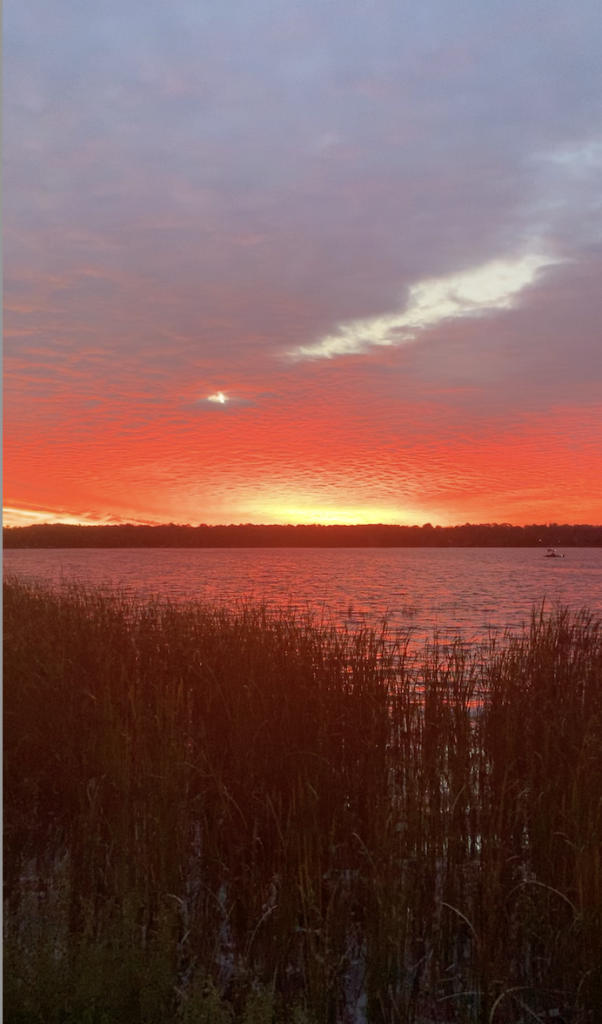
While the Elders were gathering around the fire, the traditional Healer of the community spoke to the privilege of being able to gather today. Not long ago, Anishinaabe People and other Indigenous communities on Turtle Island were forbidden to practice their cultural ways of life, including foodways. The ripple effects of colonization, still present and ongoing to this day, deeply affected the processing of the Mnoomin. However, the practice itself, the Healer insisted, never died. One of the Elders described the Mnoomin as evidence of resilience and ancestral love, connecting them to the past, where traces of Mnoomin were recorded in the lake 4000 years ago, to the present, and to the future of the Anishinaabe community.
Guided by the songs of the Elders and the rhythm of the drums, the Healer led the ritual, beginning with an offering of traditional tobacco in an act of respect and thanksgiving to the Earth. Elder Shirley Williams demonstrated how to hold the tobacco in the left hand, the one closest to your heart, pray, and give tobacco back to the earth so that the rice could grow daily.
After tobacco was offered, an invitation was extended to bless the water. Water or Nibi in Ojibwe is one of the three sacred elements given by the creator. “Water is life and when you drink that water you are purifying your mind and nurturing your body, ” explained Elder Shirley. She reminded us of the duty we all have to care for the water today. Indeed, the Mnoomin takes its nutty and fragrant flavour from the lake. When you eat Mnoomin regularly you can recognize the lake origin of the seed by its taste.
As Curve Lake First Nation Chief Keith Knott recalled, there was a time where you could put your cup in the lake and drink the water without fear of pollution. Although our food grows in the water, it is no longer safe to drink this way due to pollution.
Every year, all over Turtle Island, groups of women go on Water Walks carrying a copper vessel filled with water. In Williams Treaty Territory, a group of Anishinaabe women or Anishinaabeg kwe started the Water Walks 15 years ago at Rice Lake. They walk and sing for the protection of the lakes and raise awareness for water preservation, following the steps of the Anishinaabe migration. Elder Liz Osawamick, spoke of the water as a sacred element and gave Miigwech to Nibi and Mother Earth for regulating the water in the world.
The sunrise ceremony was concluded by the blessing of the strawberries. The berries, shaped like a heart, are symbols of love and forgiveness. In Ojibwe, they are called heart berries or Ode’iminan. The berry is medicine to the body and soul, the Healer shared. They help us understand the connection between the body, mind, and spirit. The Elders offered strawberries to the earth, mashing them in the fire, praying for forgiveness and prosperity in the harvest of the Mnoomin.
Planting the Mnoomin [photo 1]
After the sunrise ceremony, activities were organized to learn how to plant, harvest, and process Mnoomin into food. Mnoomin planters find a suitable place, in slow moving water and distribute the seeds over the rice bed.
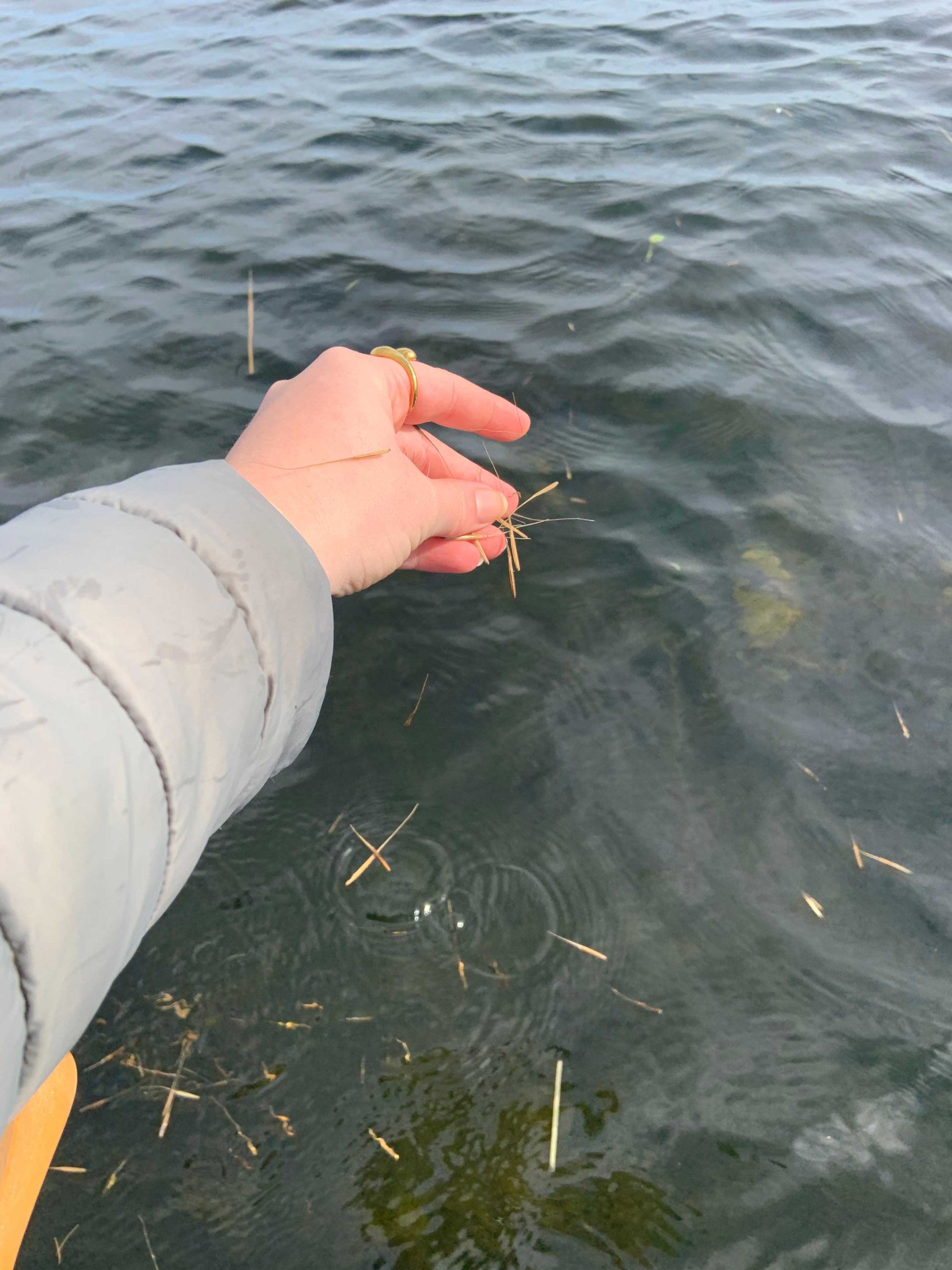
Harvesting the Mnoomin [Photos 2 & 3]
Once the rice has grown sufficiently to be harvested, between the months of August and September, Mnoomin harvesters take a canoe and paddle to the rice bed with caution, avoiding younger sprouts. Usually two people are required to harvest on canoes. When one person is paddling, the other person taps the rice stalks into the boat with a winnowing stick.
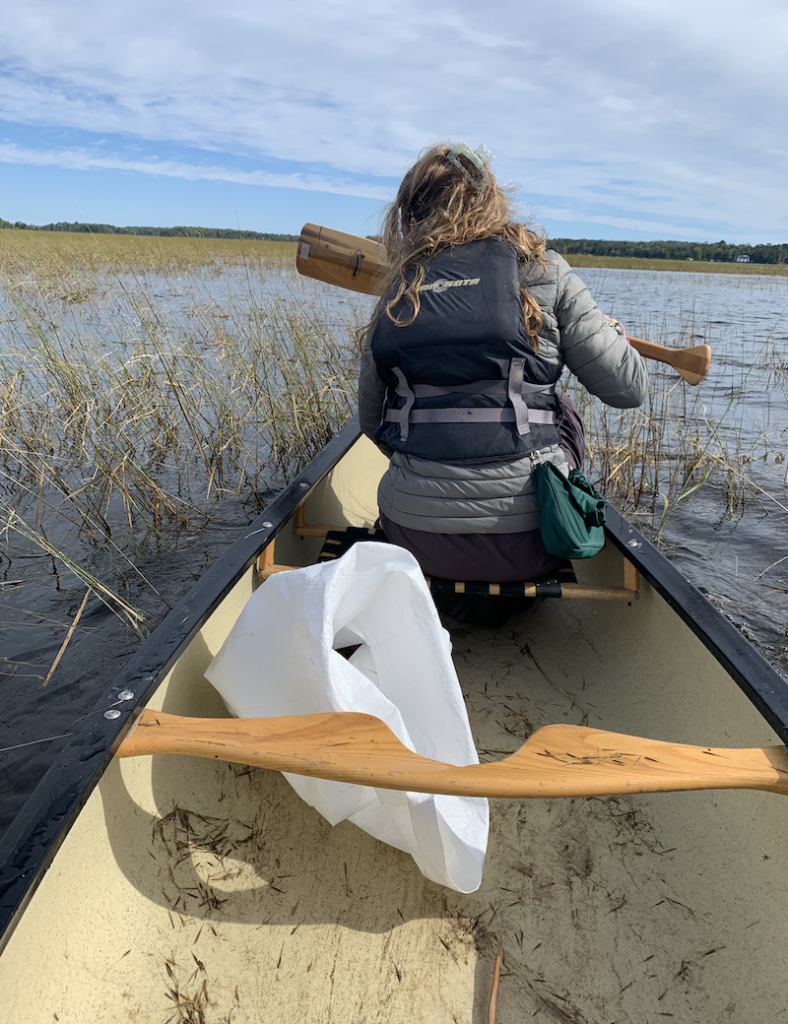
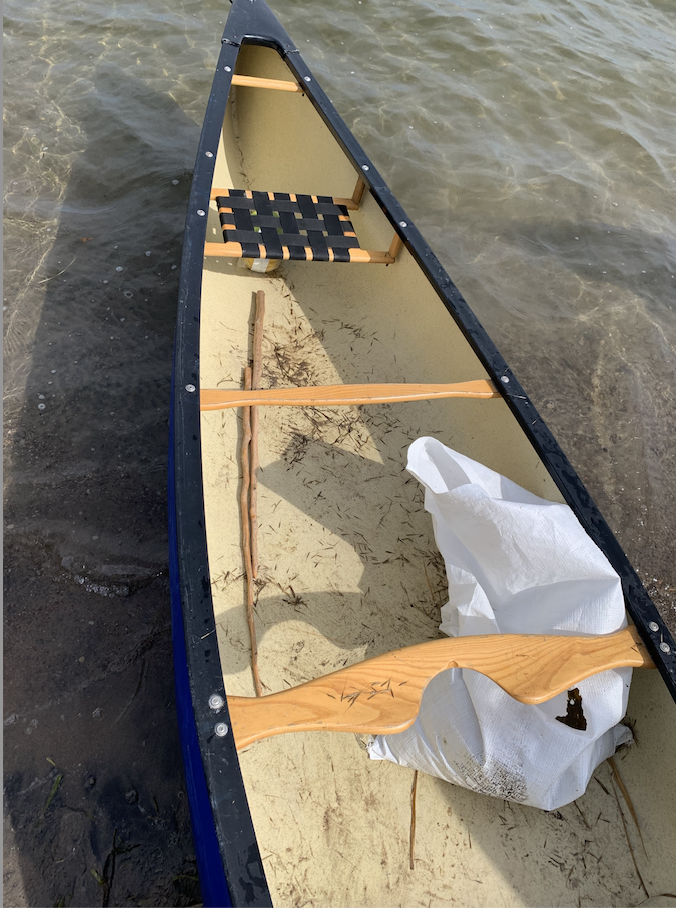
Parching the Mnoomin [photos 4 & 5]
Once harvested, the Mnoomin is parched- heated in a metal tub over fire in order to dry the seed and start to loosen the hulls. The person parching the rice, uses a paddle to turn the rice continuously to avoid burning. This step can take about 2 hours. Although used to make the extraction of the rice easier it also gives the food a beautiful roasted flavour.
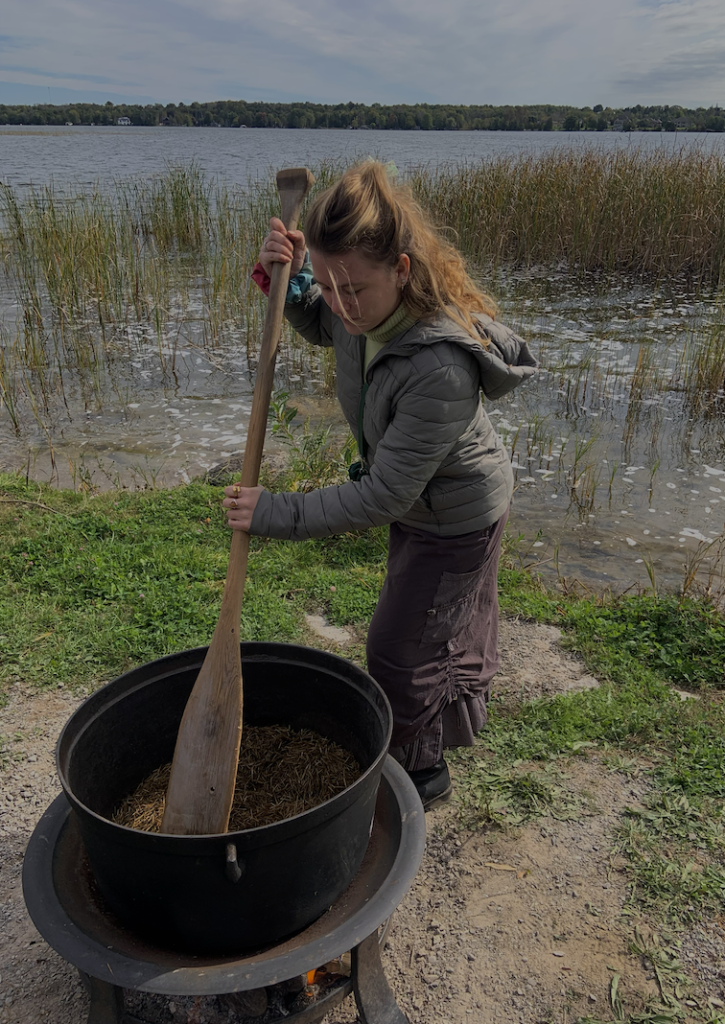
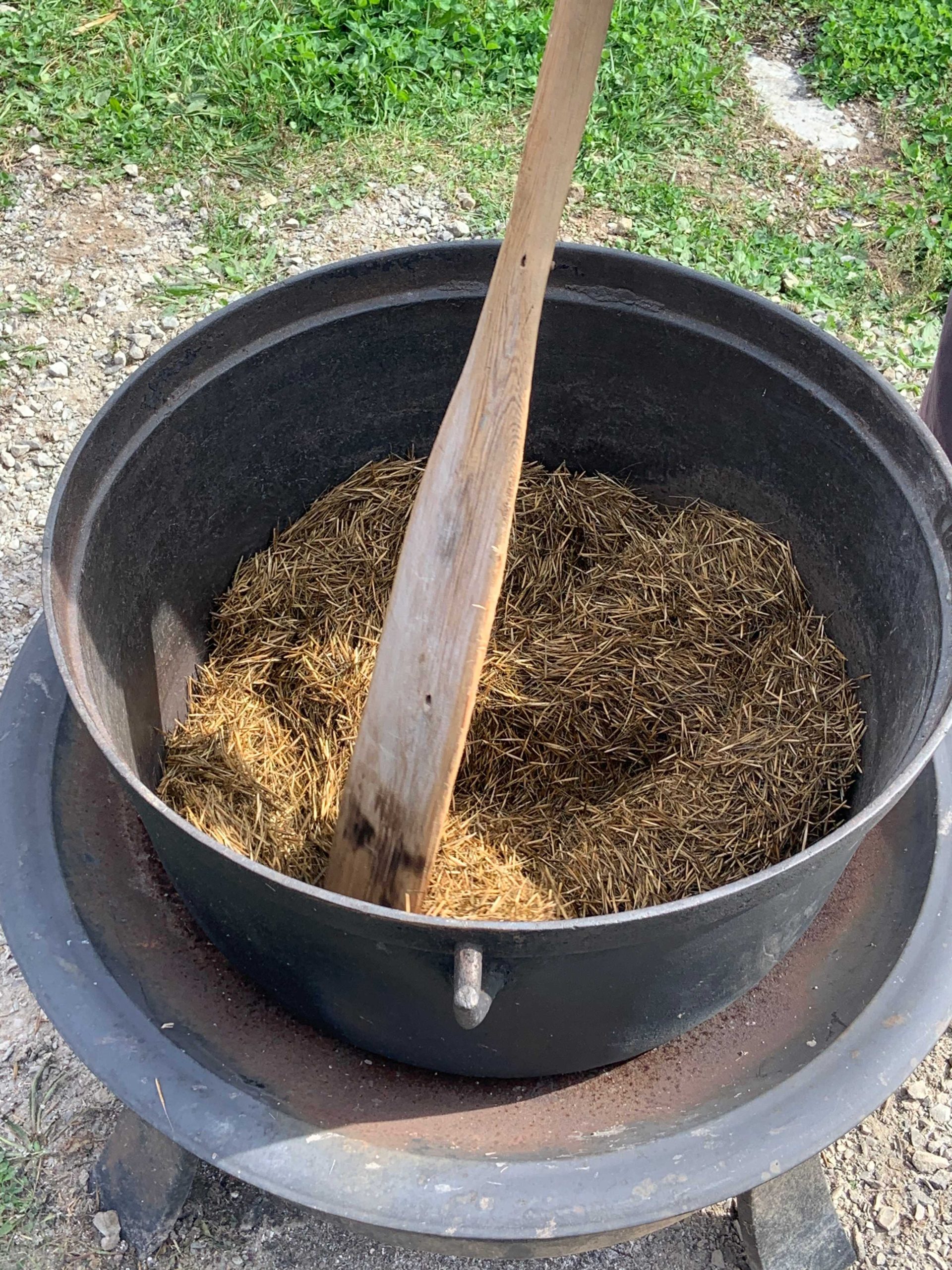
Dancing the Mnoomin [Photos 6 & 7]
Once the rice is parched, it needs to be separated from the husk. To do so, Anishinaabe’s tradition is to dance on the rice with high moccasins wrapped around the ankles, until the husk turns into thin debris separated from the rice. Remaining debris/hulls are removed using shallow baskets, tossing the rice into the air allowing the wind to sweep away the lighter hulls, while the rice grains fall back into the basket.
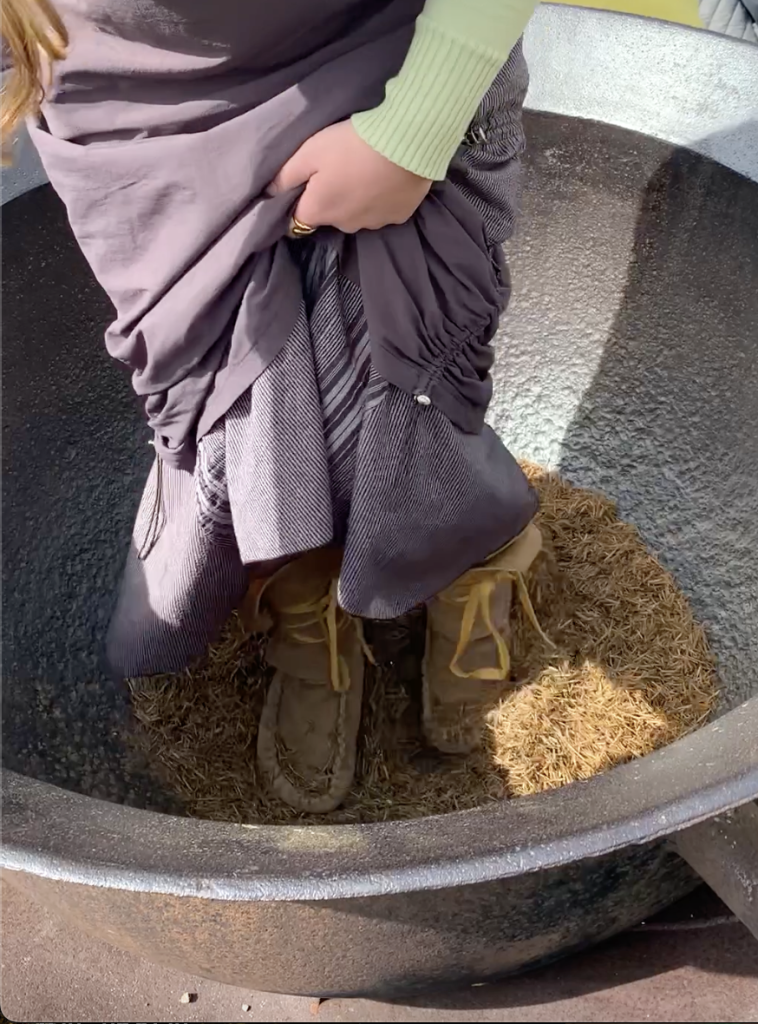
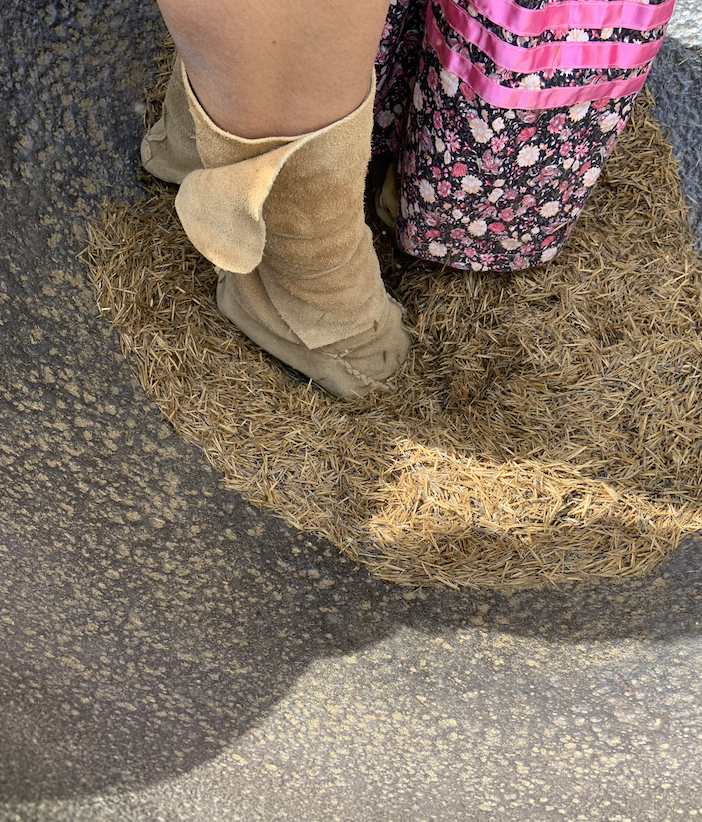
The whole process of Mnoomin is guided/inspired by the songs intoned by people from the community.
Just like corn, Mnoomin is a sustainable food that can be preserved for decades once processed. The process of the seed is also sustainable in its production. The way Anishinaabe harvest Mnoomin is ethical and respectful of nature in keeping with the Indigenous concept of “one dish, one spoon”, which places sharing at the heart of the community’s values. As a result, Mnoomin has been mostly self-reliant for thousands of years, growing to 6000 acres just in Curve Lake.
Cooking the Mnoomin
During this visit, the versatile seed was prepared in a variety of foods. Chef Shawn Adler catered a menu with heartwarming meals shared among hundreds of people.
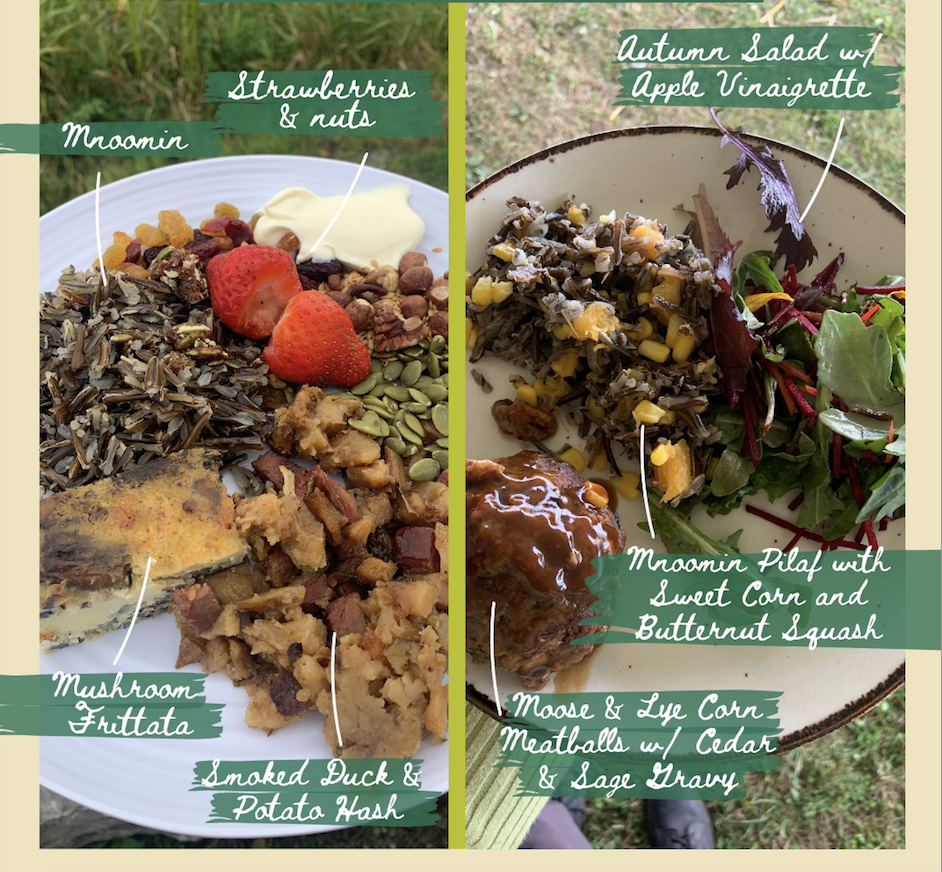
According to Rick Hill, member of the Tuscarora Nation of Haudenosaunee, we need to reconnect with our food source. He insisted that this could be a way to counteract colonialism. Indeed, although the purpose of ceremonies is to remember our past and preserve Indigenous culture, the ceremonies also serve as an avenue to rebuild relationships through food. However urgent, rebuilding relationships can’t be rushed, Rick highlighted. Teaching each other how to move together and revitalize Indigenous sustainable foodways in our communities, is a step we need to take carefully towards Truth and Reconciliation.
People left the ceremony with a sense of purpose and hope. Not only did we have the opportunity to learn more about the harvest, processing, and cooking of Mnoomin, but we also had the chance to exchange and share something deeper through food, namely a sense of unity.


